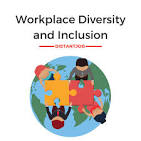The Importance of Cultural Diversity in Today’s Society
In a world that is becoming increasingly interconnected, the importance of cultural diversity cannot be overstated. Cultural diversity refers to the variety of different cultures and ethnicities that coexist within a society. It encompasses differences in beliefs, traditions, languages, and customs that make each culture unique.
One of the key benefits of cultural diversity is the opportunity it provides for individuals to learn from one another. Exposure to different cultures can broaden our perspectives, challenge our assumptions, and foster mutual understanding and respect. This can lead to greater tolerance and acceptance of others, ultimately promoting harmony and unity within society.
Cultural diversity also enriches our lives by offering a wide range of experiences, knowledge, and perspectives. It stimulates creativity and innovation by encouraging people to think outside their own cultural norms and explore new ideas. This cross-pollination of cultures can lead to the development of new art forms, cuisines, technologies, and ways of thinking that benefit society as a whole.
Furthermore, embracing cultural diversity can help combat prejudice, discrimination, and stereotypes. By celebrating the differences that make each culture unique, we can break down barriers and build bridges between people from diverse backgrounds. This promotes social cohesion and inclusivity while fostering a sense of belonging for all individuals.
It is essential for individuals, communities, organizations, and governments to actively promote and preserve cultural diversity. By valuing and respecting all cultures equally, we can create a more equitable and harmonious society where everyone has the opportunity to thrive.
Understanding Cultural Concepts: Definitions and Examples
- What do you mean by cultural?
- What is a cultural example?
- What is the meaning of culturality?
- What does very cultural mean?
What do you mean by cultural?
Culture encompasses the beliefs, customs, traditions, values, language, arts, and social behaviors shared by a particular group of people. It defines the way individuals within a society interact, communicate, and express themselves. Cultural identity plays a significant role in shaping one’s worldview and influences how people perceive the world around them. Embracing cultural diversity is essential for fostering understanding and respect among different communities and promoting inclusivity in society.
What is a cultural example?
A cultural example can be seen in the celebration of Lunar New Year in many Asian countries. This traditional festival involves various customs and practices, such as family gatherings, special meals, dragon dances, and the giving of red envelopes for good luck. The significance of Lunar New Year reflects the cultural values of prosperity, unity, and renewal within these communities. This example illustrates how culture influences people’s beliefs, behaviors, and traditions, shaping their identities and fostering a sense of belonging within a particular group or society.
What is the meaning of culturality?
Culturality refers to the unique characteristics, values, beliefs, and practices that define a particular culture or group of people. It encompasses the social norms, traditions, language, art, and customs that shape the identity of a community. Culturality plays a crucial role in shaping individual identities and influencing societal interactions. Understanding culturality is essential for promoting cultural diversity, fostering mutual respect, and building inclusive communities where all individuals feel valued and accepted for their differences.
What does very cultural mean?
The term “very cultural” typically refers to something that is deeply rooted in a specific culture or exhibits a strong influence from cultural traditions, beliefs, or practices. When something is described as “very cultural,” it suggests that it embodies the essence of a particular culture and reflects its values, customs, and heritage in a significant way. This can include art, music, food, clothing, rituals, or any other aspect of a culture that holds great importance and significance within that community.




Leave a Reply